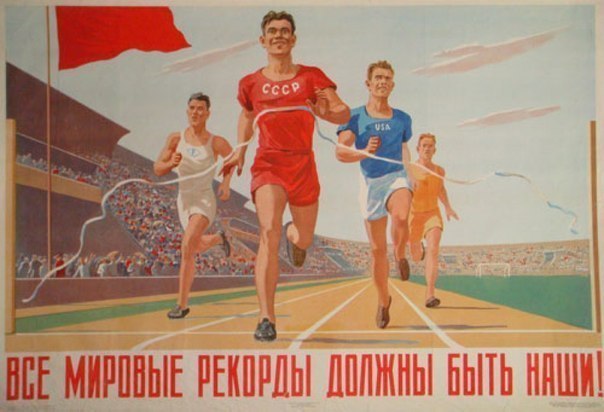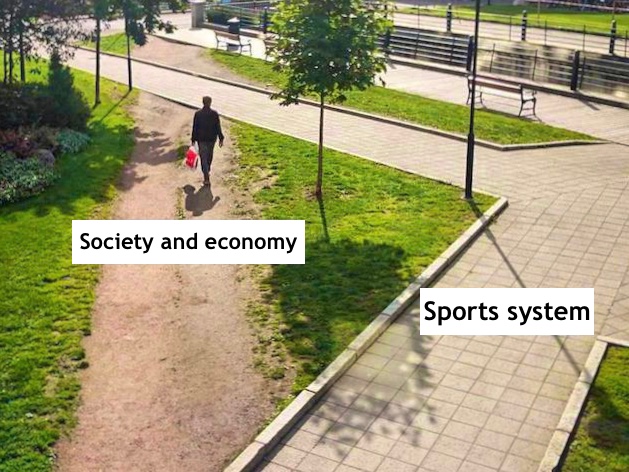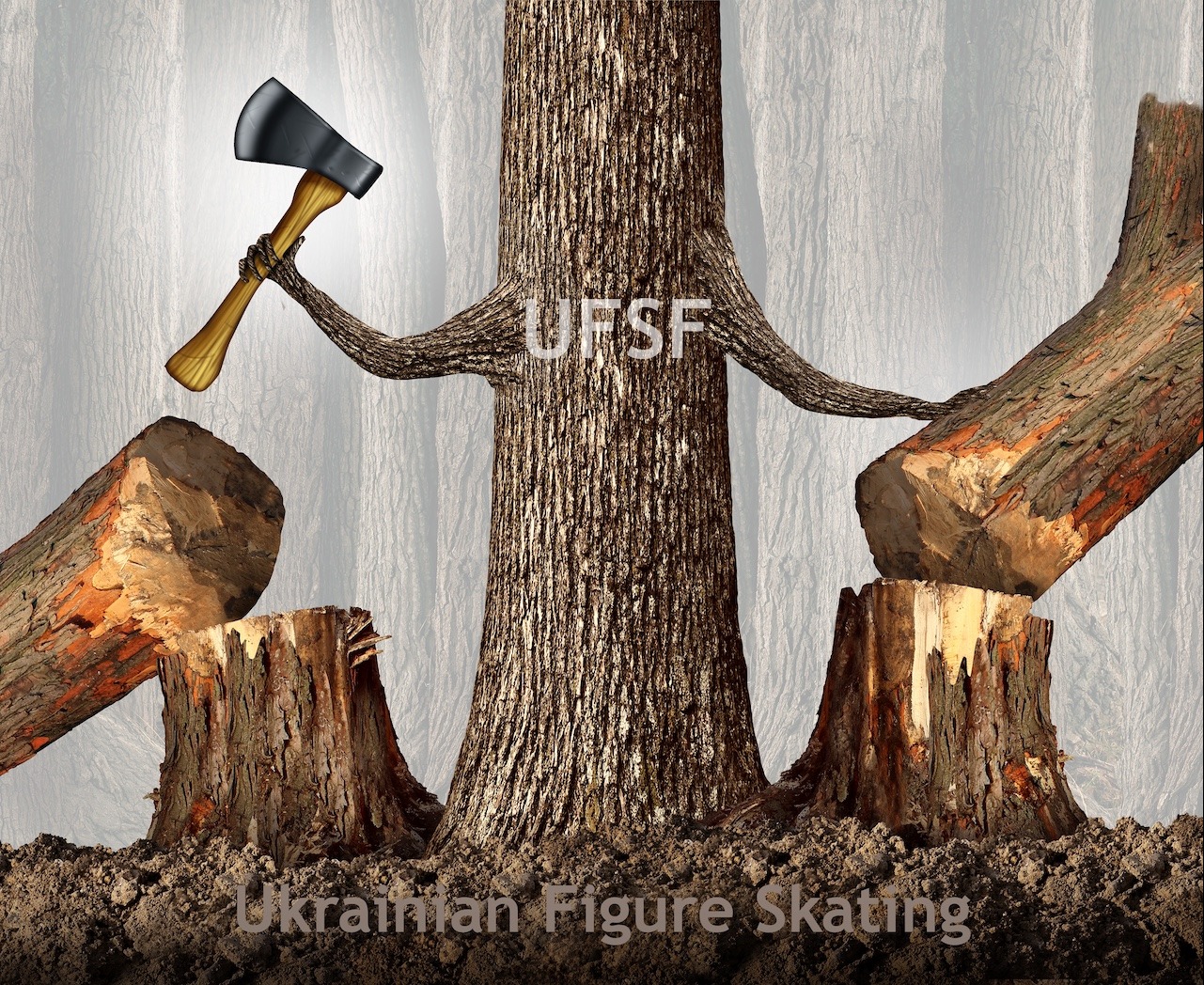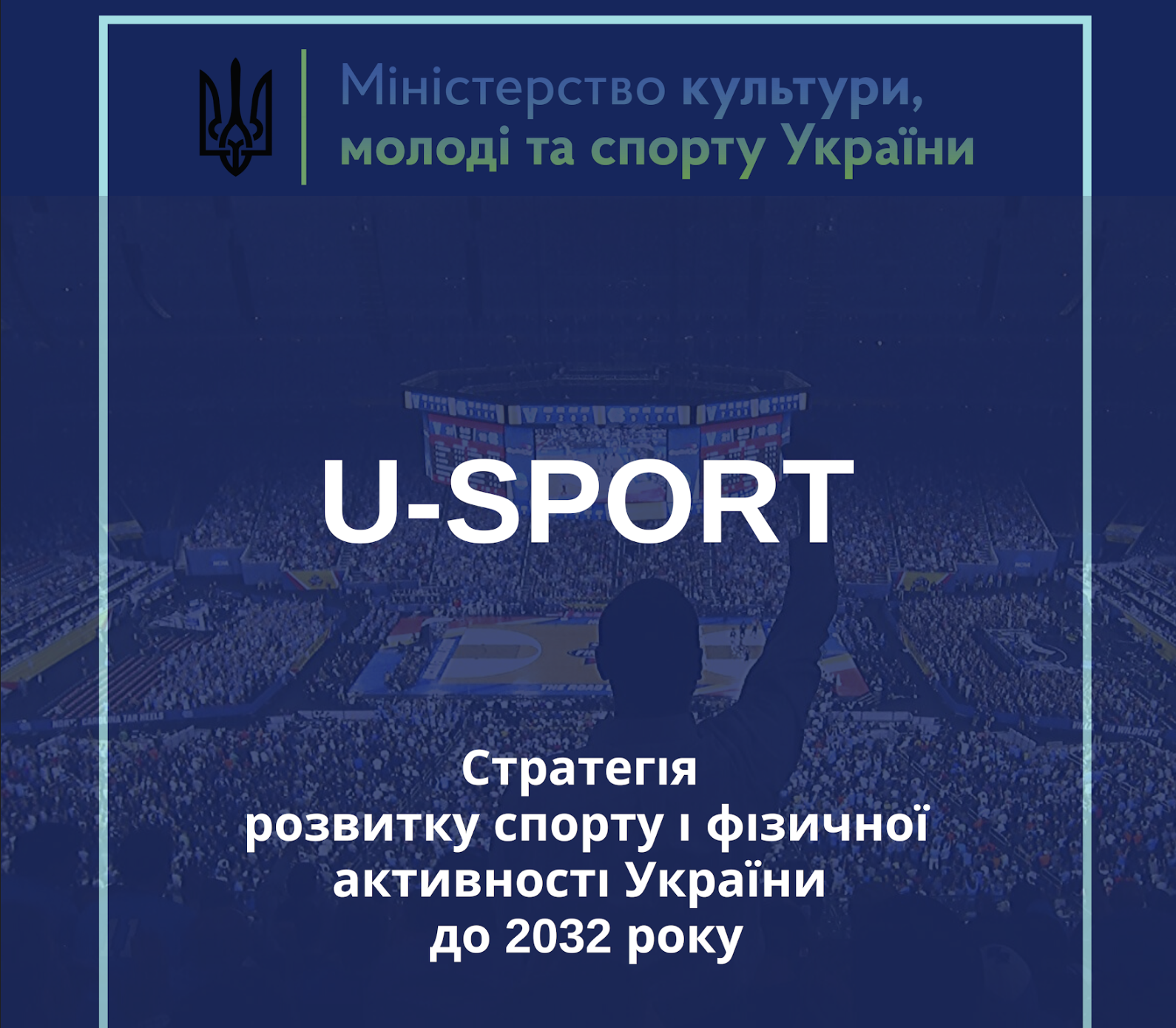Ukrainian Figure Skating Federation (UFSF) is the sporting body that governs figure skating in Ukraine, organizes competitions, and has a unique right to represent Ukraine in the International Skating Union (ISU). UFSF website boasts about its high achievements, Olympic champions, high moral standards, and valuable scientific work in the field. Yet, if you look at the actual stats, you'll see how unequivocal the degradation of Ukrainian figure skating is under the UFSF governance. If you listen to Ukrainian figure skaters, who are fleeing UFSF at wildly alarming rates, you'll be surprised how often words like "corrupted", "controlled by one family" or outright "mafia" appear. On the international level, UFSF is well known for high-profile judging scandals, with many Ukrainian judges being disqualified. Many people blame UFSF for deliberately destroying figure skating in Ukraine for decades.
Discussions on this matter usually revolve around certain local conflicts or personalities, and in the end, everyone seems to agree that "we need to change the system". But nobody seems to offer an explanation of what is the "system" exactly. Hundreds of people want to "change the system", yet no one took care to explain what the system is, how it works, and where it fails, let alone how to change it.
Nobody is asking the fundamental question – what's wrong with UFSF?
In this article, I'll do my best to fill this gap.
What is "the System"?
Let's start with a textbook definition. The system is just a set of formal and informal rules and relationships between involved people:
- Formal rules are written contracts, prescribing how to act - usually in the form of laws, policies, and standards.
- Informal rules are social beliefs, stereotypes, "unspoken rules", trust and personal relationships between people.
Corruption, for example, never exists in a form of formal laws, but imperfect laws lead to the emergence of corruption, which becomes an informal unspoken rule. Both formal and informal rules are intimately connected.
Every organization, including UFSF, is merely a set of formal and informal rules, and people, who agree and enforce them.
Formally, UFSF is a non-profit public organization created for the development of figure skating in Ukraine. Formal rules state that UFSF governs figure skating as a sport discipline in Ukraine. Bylaws document states that every member has equal rights and a chance to influence the direction of UFSF. Formally, it's an open and transparent organization governed by a democratic voting process. UFSF, on paper, is a collective effort of coaches, skaters, parents and everyone else to coordinate efforts in making figure skating in Ukraine better.
In reality, though, it's far from the truth – figure skating in Ukraine is governed by the Ministry of Sports, and not by UFSF. Head positions in UFSF didn't change much in three decades and all decisions are made by a small group of people behind the closed doors. Most UFSF members feel voiceless and powerless when it comes to influencing actions of the federation. Common knowledge is that UFSF has a power hierarchy, and obedience to this hierarchy is a requirement for anyone who wants to be heard. Many clubs and coaches avoid UFSF as much as possible unless they are forced to do so for participation in Nationals or in international competitions.
Why there is such a discrepancy between the formal and informal structure in UFSF?
To answer that question we have to take a step back and look at the history of the UFSF. UFSF was formed in early 1992, a half a year after USSR has been dissolved. Little is publicly known about actual events for that period, but we do know that Liudmyla Mykhailovska was a president of the Ukrainian SSR federation since 1980 and continued to serve this role in UFSF since 1992. So it's safe to say that UFSF was just a "rebranding" of the Ukrainian branch of Soviet Union's Figure Skating federation and inherited its rules.
This leads us to the next important aspect – federations exist within the context of the larger system – national sport governance system.
Sport governance systems
While sport is widely seen as a social and self-organizing activity, governments see it as a public good, and in all developed countries they participate, intervene, and encourage sports development. The role of sports for governments varies from country to country, but it generally can be divided into four categories: health, social control, diplomacy, and economic development.
The exact set of objectives for each particular government depends largely on the political and economic situation in the country, and sport governance models often mirror the political systems, and for a good reason.
Broadly speaking, there are three major sport governance systems in the world:
- Soviet (Russian) system – sport is centrally governed and controlled by the state, strict top-down hierarchy.
- North-American system – sport is governed by the economic forces of free market, and the state rarely involves into it.
- European system – mixed market system, regulated and subsidized by the government.
Soviet system mimics the authoritarian central governance model of the USSR – everything is centrally controlled and organized by the government. Government controls not only flows and allocation of finances but also rules of the sports itself, distribution of sports schools in the country, coaches' salaries, locations of the sports infrastructure objects, and pretty much everything else.
The North-American system is the exact opposite – the government self-removed itself from sport governance, and all control was given into the hands of sports federations, associations, and private businesses. Even the United States Olympic & Paralympic Committee in the US is a private non-profit corporation.
European model is similar to the North-American system, except instead of economic profit maximization, it favors utility maximization, where utility might be health impact, number of people in sports and other socially desirable things. Clubs are often non-profitable, but this is compensated by governments subsidies. Due to the large number of different states in the EU, this model can be seen as an umbrella term for a group of different models.
There is no inherently good or bad system, but the rule of thumb is that sports governance system should match the country's governance system. The centralized Soviet model won't work in the US, and the European club-based system won't work in China.
Ukrainian sports governance system was inherited from the Soviet Union, but since obtaining its independence, Ukraine has made a strong shift towards a democratic pro-European society. The mismatch between these two causes all sorts of discrepancies – the Soviet system simply doesn't work for Ukraine anymore. To understand why, we should, again, take a look at the history of the Soviet sport governance system.
What's the deal with Stalin?
Foundations of the Soviet sports system were laid in the 30s, by Soviet dictator Joseph Stalin. Most historians agree that the main role for the sports in that era was to produce strong bodies for the planned economy, and international prestige was of little concern – USSR wasn't a member of any international sports federation till late forties (joined ISU in 1948) and didn't even take part in Olympic Games until 1952. However after the end of the World War II, the political influence over the new world was a question of the highest priority for Stalin, so a new system was created to ensure USSR dominated the sports in the world and demonstrated the superiority of communism over capitalism. The Olympic Committee of the USSR was formed on April 1951 and USSR debuted at the Olympic Games for the first time in 1952 in Helsinki.
The system was built by the only means and principles familiar and available to Stalin – orders and punishments. All officials were appointed from the above and had to do whatever they've been ordered under the fear of execution. In his book "Hard roads to Olymp", Nikolay Romanov, who was the head of the sports committee and prepared the first USSR Olympic team for the 1952 Games, writes:
Once we decided to take part in foreign competitions, we were forced to guarantee victory (to Stalin), otherwise the 'free' bourgeois press would fling mud at the entire nation as well as at our athletes... In order to gain permission to go to international competitions I had to send a special note to Stalin guaranteeing victory.
He didn't make the mistake of disobeying Stalin. Previously five sports ministers and many sports officials and players had been executed, and many have spent decades in labor camps. The "win at all costs" system has been born.
This fear of execution was underpinning the whole system, often rendering it absurd and ridiculous. One notable episode involved Stalin's son, Vasiliy, who was appointed as the head of ice hockey Soviet team VVS Moscow. On January 7, 1950, the plane with the team crashed in Ekaterinburg (then Sverdlovsk) killing all players on board. Fearing the anger and punishment from his father, Vasiliy quickly assembled a team from new players, some of them were of the same surname as deceased players and ordered the press not to mention players at all, or just use the surname for players with the same surnames. Joseph Stalin never learned about the death of hockey players and didn't punish Vasily.
These examples are just tip of the iceberk, but they show the fundamental principles behind the Soviet sports system. Decades of fear of execution transformed into the core principle of "win at all costs", even when there were no executions for sports officials anymore.
This system has produced a structure of "voluntary" sports societies (VSS) closely tied to industries and ministries. There is little "voluntary" part in it as VSSs were created, governed and funded by the state. The governing body for VSSs was the Council (All-Union Council of Trade Unions' VSS), which was also managing the system of system of sports schools for children and youth – DUSSh ("ДЮСШ") and sports federations.
Sports federations in this system were just one link in the chain of state sports machine. Its main task was to legitimize centralized sports management on the international arena. Soviet federations historically had nothing to do with voluntarism or uniting sports clubs, athletes and fans. In a way they were fake organizations, existed to fill the bureaucracy machine needs. They have never had mechanisms for democratic voting, let alone ensuring fairness of processes or sports development. Federations in USSR were designed to report and obey orders from the Council, with a main task being a winning medals at all costs.

Ukrainian sport governance system is still heavily based on this system created by Joseph Stalin's regime.
Why this system doesn't work anymore?
That centralized governance model "worked" for the USSR because the society was structured and organized the same way. Ukraine is young but undoubtedly a democratic society, and is slowly moving towards decentralized governance in all sectors.
A centralized sport model simply is a misfit to Ukraine.
To start with, this centralized sport governance system contradicts the Constitution of Ukraine. Sports federations are public organizations in Ukraine. According to its laws, the state has no right to intervene in the activity of the public organizations, and yet, when it comes to the sports federations, the state intervenes heavily by imposing tons of limitations and regulations on sports development and activities.
For example, currently the state:
- dictates and limits the salaries of the coaches
- demands the diploma for the state university for coaches (even for chess coaches)
- imposes the rules on who and how can participate in competitions
- imposes the rules on how the sports education process should be organized
and so on.
Which doesn't make sense for modern Ukrainians. If you want to exercise a sport, why should you ask permission from the government to do so? It doesn't make sense anymore that the Ministry of Sports has to tell people how, when, and where to exercise a particular sport. It's nonsense that the government has to decide where and which sports schools should be. Sports federations asking state permission to adjust the game rules don't make sense anymore.
Many Ukrainian sports federations are labeled as "voluntary public organizations" for the lack of a better legal option only. In fact, they're still just links in an obsolete state-governed sports machinery chain, which has nothing to do with voluntary participation or self-governance.

Resources curse
But the major issue this misfit produces is the broken sports economy. You see, the sports economy starts with people, who create supply and demand for sports services and goods, and the better formal system matches the existing interactions between people in the society, the healthier its economy is. The economy is that invisible hand that governs choices people and organizations make every day. It underpins people's incentives or lack thereof in sports, growth or decline of infrastructure, the landscape of coaching labor, demographics, and patterns of athletes' and coaches' migrations and everything else. The national sports system can't exist without a healthy economy that supports it. Figure skating is a particularly expensive sport discipline and depends on it even more.
Central planning and governance could bend market forces at the expense of the effectiveness and enormous costs, but a decentralized market-based system can not.
If you think about money as a food, and sporting sector as an animal, then Soviet sport could be described as a pet, who had always had plenty of food, and never learned or cared about how to find, produce or hunt food themselves.
- Was it good for the pet? Maybe.
- Will this approach produce a strong and fast-growing pet? Perhaps.
Like any pet, it has little control over its own future too.

But what if magical food supply suddenly stops? It's a well-known fact that domesticated animals can't survive in the wild – they simply don't have basic skills to survive. That's exactly what's happening to the sports economy in Ukraine. It resembles a poor pet, suddenly left alone without food on the street, struggling to learn how to find food, shelter and care for itself.
Economists often call this situation a "resource curse" – when an abundance of resources hinders or stops the development of institutions needed to grow and survive in a long-term perspective. The absurd amount of finances the Soviet government was pouring into the sports for decades converted our coaches, athletes, and officials into helpless consumers who know nothing about sports economics, management or marketing in a market economy and stuck in a permanent expectation of uncoditional budget inflow.
Broken hearts
This outdated system with a broken economy still somehow works only by inertia. Let's walk through some real-life examples of broken parts it produces:
- educational system produces new figure skating coaches each year, but the coaching demand is limited by the number of DUSSHs in the country and doesn't meet the supply. Young coaches line up, waiting for the central system to find a place and money for them. Most either leave the country, drop out, or work unofficially at the public sessions on malls' ice rinks, being excluded from the Ukrainian sports system.
- young coaches don't have an official way to form their own skating club and develop their potential. This effectively destroys the supply potential of coaching services, which could boost the demand and growth of the whole market. Hundreds of Ukrainian coaches are forced to find this opportunity in other countries, resulting in a huge loss for the Ukrainian figure skating economy.
- federation and DUSSh budgets depend exclusively on state funding, which was the main and only source of finances with a Soviet government. They don't know how to raise money in other ways, how to leverage sponsorship, fundraising, or commercial opportunities to increase their budgets. That's why you keep hearing the same phrase over and over in interviews explaining the decline of Ukrainian sport – "state doesn't provide enough money".
- with salary caps for coaches and lack of financial management skills, this decreasing state sports budget becomes a rife soil for corruption and incentivizes consolidation of power in federations' structures. In figure skating, federations have almost full control over sports schools, and scandals around misusing state funds are ubiquitous.
- lack of fair competition between sports clubs and coaches leads to declining and stagnating effectiveness and quality of the services provided by sports schools.
- shortage of infrastructure – as figure skating requires expensive ice rinks to operate, and the central government doesn't throw millions into building and maintaining arenas anymore, other means of accumulating investments are virtually unknown. DUSSHs and federation have almost exclusive access to the few existing ice arenas (all of them not meeting international requirements or outright old) and fight with each other for access to the ice.
- lack of institutions for helping athletes to find their place in life after they retire. In the USSR, as ex-athletes were unable to win new medals for the state, they were forgotten by the system. They came unprepared to do anything else in life, and many ex-athletes found the solution in alcohol or other drugs.
- early specialization and normalized child abuse – while modern scientific studies and empiric evidence suggest that late specialization is more beneficial for children's developments in many sports, the Soviet system still dictates strict age ranges and body dimensions for "good candidates". Many children drop out from figure skating early because they are constantly being told that they are "too old", "too fat", or simply due to not tolerating screams, bullying, belittling and hitting by coaches, which was seen as a normal coaching process in the USSR's "win at all costs" system.
In other words, there is a huge misbalance between what Ukrainian figure skating people want and what the Ukrainian sport system can offer. This lack of capacity for raising funds, lack of institutional knowledge about sports management in a market economy, and learned feeling of self-helplessness provide rich soil for corruption, endless internal fights, conflicts, injustice, moral and physical traumas. The broken system yields thousands of broken hearts, careers, opportunities, and lives.
So, what's wrong with UFSF?
Let's return to our original question – what's wrong with UFSF?
Perhaps it's the fact that UFSF has never been a federation in a common sense of this word. Soviet federations weren't created by clubs, who decided to unite and join effors in developing a particular sport. They were created by state for burecrausy purpose. UFSF is still a largely bureaucratic body that cherish soviet system principles. It doesn't destroy figure skating on purpose, of course, but their obsolete and helpless organization principles inevitably lead to destruction.
People who obtain head positions at UFSF for decades are not a problem either – they are just a symptom of a larger problem. Replacing people may help resolve some local conflicts, but won't solve the root cause. Solving the root cause, though, will for sure replace people.
In the end, UFSF is not a voluntary public organization and has never been. It's a kolkhoz found itself in a farm economy and not realizing it.
What to do?
As with any other misfit, where one part doesn't fit another, there are two options – change one or another. As we already learned, the problem with UFSF is a misfit of sport governance system with a decentralized social structure of modern Ukraine, where UFSF is representing the former. Thus, we have two choices:
- Change sport governance system
- Return Ukrainian society back to the totalitarian USSR model
The second option is what most people indirectly suggest with arguments like "president should personally take over figure skating in Ukraine" or "we should appoint oligarchs as presidents of federations". Luckily, this is not going to happen.
The only real option for Ukraine, thus, is the first one – adapting the sports system to a new reality. This adaption, in its turn, has two important frontiers to work on.
The first frontier is the legislation change – the formal rules overhaul. Ukrainian government has to make a switch to a sport governance model better suited to Ukrainian society structure and demands. This most likely will be the European system, heavily based on clubs, self-governance, and bottom-up participation, with transitional adjustments facilitating the switch. Ukrainians should gain the right and legal framework to create their own clubs, to govern the sport without the intervention of the government institutions and become active participants of the sports markets, rather than passive and obedient dependants of state and local budgets. We should not blindly copy the model from the UK or Italy or any country, but we should learn from all of them as much as possible before we even start discussing it.
Some small steps towards turning away from the Soviet system can be seen today. For example, just a few months ago, the amendment to the law passed allowing federations to refine and adjust the rules of their sports without asking for approval from the Ministry.
In fact, in the recent Strategy of sports development in Ukraine 2032 (U-Sport 2032), the former Deputy Minister of Sports of Ukraine, Volodymyr Shumilin, made this transition vector crystal clear. Sport, first and foremost, is for creating a healthy and happy nation. International prestige and medals are important, but they come after the health of future generations. Ukraine is choosing the European sport governance model. This strategy, superseded by a new one (Strategy of sports development in Ukraine 2028) under a new government, seems to be similar in some aspects. The collective demand for the system overhaul seems to be clear, and switch to the European model is a question of time.
The second important frontier, though, is an informal part of the system. Ukraine doesn't have examples of sport governance under the club system, so plenty of myths are circulating around this subject. The good news, though, is that we already have many clubs unofficially, so the ground is ready. In reality, many Ukrainian figure skaters are already a product of a club system, without even realizing it. Let me repeat this clearly – the club system already exists in Ukraine, it's just in its infancy and is poorly understood.
That's why it's so important to destroy those myths about the European model and communicating how sport can and should be organized. This will take years of proactive communication to bring a critical mass of people who will be able to develop the foundations of the new Ukrainian club system. Thanks to a visa-free entry to the EU for Ukrainians, many have had a chance to get familiar with the European model themselves, and it also seems to have a positive effect on a better understanding of the alternatives to the paternalistic Soviet sports system. The next article in this series will be devoted to the debunking myths about the club system.
In the end, Ukraine doesn't have much choice. Either we transition to a better sports governance model and do it right, or we destroy Ukrainian sport completely.
In the next article, we will take a deeper look at what club system really is, how it works in other countries, and how it is more likely to be working in Ukraine during, and after transitional period.
Stay tuned and let us know what you think on our forum.




